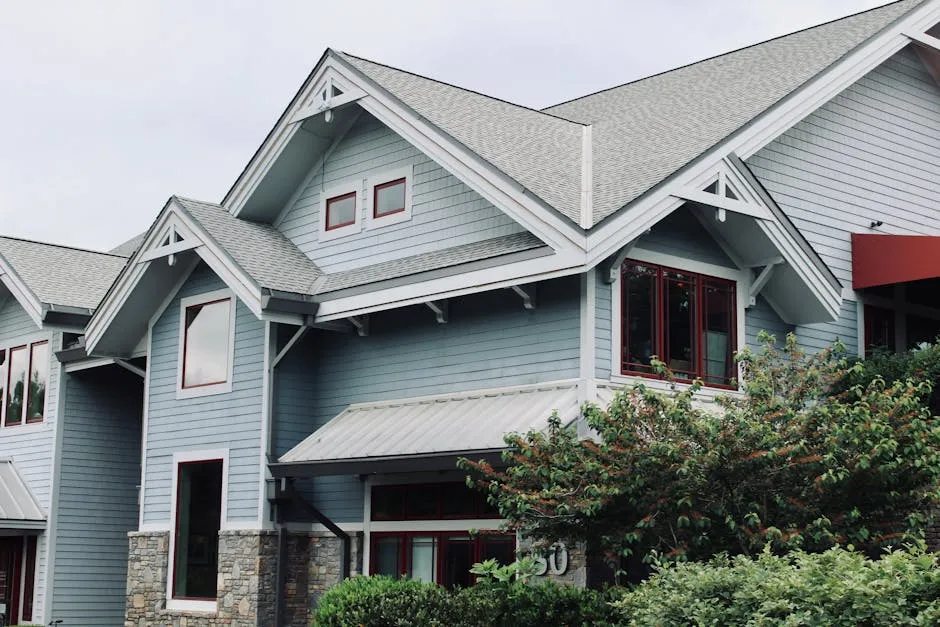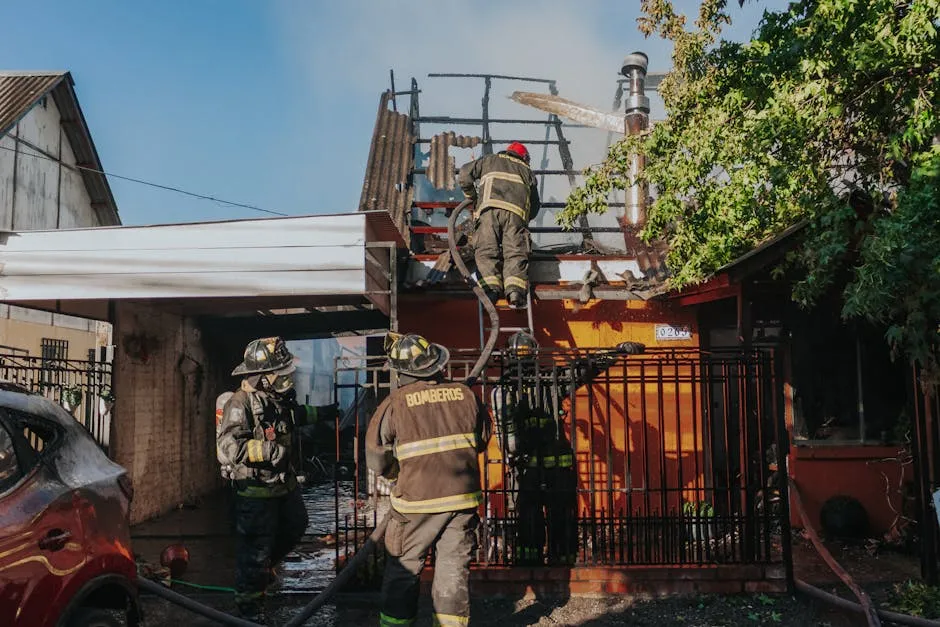Introduction
Nestled in the stunning Blue Ridge Mountains, Asheville, North Carolina, is a city that thrives on culture, creativity, and natural beauty. Known for its vibrant arts scene and historic architecture, Asheville attracts visitors and new residents alike. However, like any city, it faces its share of challenges, particularly concerning crime.
This article aims to provide a thorough examination of crime statistics in Asheville. We will explore trends, comparisons, and neighborhood safety, offering insights that are vital for residents, tourists, and prospective newcomers. Understanding crime statistics is essential for making informed decisions about living and visiting this beautiful city.
In a world where safety is paramount, having access to accurate crime data can empower individuals. Whether you’re a long-time resident or a curious traveler, being aware of Asheville’s crime landscape can enhance your experience and overall sense of security. Let’s dive into the statistics that shape Asheville’s crime narrative.

Understanding Asheville’s Crime Landscape
Overview of Crime in Asheville
Asheville’s crime rates have garnered attention due to their notable figures. The city currently faces a combined violent and property crime rate of approximately 61 per 1,000 residents. This places Asheville among the higher crime rates in the United States. When we compare this to North Carolina’s state average, which stands at about 20.64 per 1,000 residents, it becomes clear that Asheville’s crime concerns are significant.
In total, Asheville reported around 5,690 crimes last year, translating to roughly one in 16 residents experiencing a crime. Violent crimes, comprising murder, rape, robbery, and assault, account for a substantial portion of these statistics. To give you a clearer picture, the violent crime rate in Asheville is approximately 9.37 per 1,000 residents, significantly higher than the state average of 4.05.
Interestingly, many Asheville residents feel a mix of safety and concern. Recent surveys indicate that while some feel secure in their neighborhoods, a notable 70% express unease regarding crime levels, especially at night. This duality reflects the complex nature of urban living, where beautiful surroundings can sometimes mask lurking dangers. Understanding these dynamics is essential for anyone considering a visit or a move to Asheville.
Arming yourself with information about crime rates is a proactive step toward ensuring safety and making informed decisions. Whether you’re looking to explore Asheville’s vibrant streets or searching for a new home, being aware of these statistics is the first step in understanding the city’s crime landscape.

Crime Rate Breakdown
Violent Crimes
Violent crimes encompass serious offenses that threaten physical safety. These include murder, rape, robbery, and assault. In Asheville, the statistics paint a concerning picture. Last year, there were a total of 879 violent crimes, resulting in a rate of approximately 9.37 per 1,000 residents.
To break it down further:
- Murder: 12 cases (0.13 per 1,000 residents)
- Rape: 61 incidents (0.65 per 1,000 residents)
- Robbery: 136 reports (1.45 per 1,000 residents)
- Assault: 670 occurrences (7.14 per 1,000 residents)
When we compare these figures to North Carolina’s state averages, Asheville’s violent crime rate is notably high. The state average is around 4.05 per 1,000 residents, making Asheville’s rate more than double that. Over recent years, while some fluctuations in violent crime have occurred, the overall trend shows a troubling increase, particularly noted in 2022 when the city recorded a peak in violent incidents.
Residents and local authorities remain vigilant, as this spike in violence has raised concerns about safety in various neighborhoods.

Property Crimes
Property crimes include offenses such as burglary, theft, and motor vehicle theft. Asheville has seen a significant number of these crimes, totaling 4,811 last year. This results in a property crime rate of about 51.30 per 1,000 residents.
Here’s how the numbers stack up:
- Burglary: 676 incidents (7.21 per 1,000 residents)
- Theft: 3,717 cases (39.64 per 1,000 residents)
- Motor Vehicle Theft: 418 reports (4.46 per 1,000 residents)
In comparison, North Carolina’s average property crime rate is approximately 20.64 per 1,000 residents. With Asheville’s figures being more than double that, it’s clear there are significant challenges.
Recent years have shown some fluctuation in property crime rates, with a decrease noted in 2023. Despite this, the overall concern remains high, especially as residents report feeling increasingly wary about their belongings, particularly in urban areas.
The statistics reveal a city grappling with crime, both violent and property-related. For residents and visitors alike, awareness and informed decisions are crucial.

Neighborhood Crime Comparisons
Safest Neighborhoods in Asheville
Asheville has some charming neighborhoods that boast low crime rates. Let’s take a look at the safest spots in town:
- Rose Hill Rd / Bee Ridge Rd: This area has a low crime rate, making it ideal for families.
- Riceville: Known for its community vibe and minimal crime, Riceville is a hidden gem.
- Enka Village / Bent Creek: A peaceful neighborhood with a friendly atmosphere.
- Stoney Knob: Offers scenic views and a very low crime rate.
- Old Leicester Hwy / Lees Creek Rd: This area is quiet and offers a sense of security.
- Azalea / Sherwood Forest: A beautiful neighborhood with ample greenery and safety.
- Georgetown / Juno: Known for its tight-knit community and low crime statistics.
- Ballantree / Givens Estates: Families thrive here, thanks to its safe environment.
- Beaverdam Run / Hills Of Beaverdam: A lovely area that feels like a retreat.
- Emma: A small neighborhood with a strong sense of community.
These neighborhoods tend to have well-maintained homes and active community engagement, which contribute to their safety. Low traffic and local watch groups also play a role in keeping crime at bay.

Most Dangerous Neighborhoods
Unfortunately, not all areas in Asheville enjoy the same level of safety. Here are some neighborhoods with higher crime rates:
- Downtown Asheville: While vibrant and bustling, it has a higher incidence of property crimes.
- West Asheville: This area has seen spikes in both violent and property crimes recently.
- East Asheville: Reports indicate increased vehicle thefts and burglaries.
- South Asheville: Mixed reports of crime; some areas are safer than others, but caution is advised.
- Baker Area: Notoriously known for petty thefts and vandalism, particularly in commercial areas.
Factors contributing to higher crime rates in these neighborhoods include economic challenges, transient populations, and nightlife activities. Increased police presence and community initiatives have been introduced to combat these issues, but they remain a concern for residents.

Resources for Crime Data
If you’re looking to keep tabs on crime statistics in Asheville, there are several excellent resources at your disposal:
- SimpliCity: This tool lets you search for any address within Asheville. You can access crime statistics specific to that location, view data on a map, and even customize your search radius. It provides detailed reports on crime types and incident dates.
- Community Crime Map: This interactive map allows you to visualize criminal activity over time. You can select specific dates and crime types, and even sign up for neighborhood watch reports. This tool is great for staying informed about what’s happening in your area.
- Open Data Portal: A comprehensive resource that offers a wealth of information, including crime data. Users can interact with maps and download data in various formats. This is useful for those who need detailed insights for research or personal safety.
These tools are invaluable for residents and visitors alike, providing a clearer picture of Asheville’s crime landscape and helping you make informed decisions.

Local Law Enforcement and Community Initiatives
Overview of Law Enforcement in Asheville
The Asheville Police Department (APD) plays a crucial role in maintaining safety in this vibrant city. With approximately 238 sworn officers, the staffing level is currently below capacity, leaving about 63 positions unfilled. This shortfall can strain resources and affect response times, leading to concerns among residents.
In recent years, the APD has rolled out several initiatives that aim to combat crime and enhance community safety. One notable change is the increased police presence in high-traffic areas, such as downtown Asheville. Officers now patrol on foot, bicycles, and vehicles to foster a sense of security. This proactive approach aims to deter crime and build trust within the community.
Additionally, the APD has launched the Community Responder Pilot Program. This initiative allows teams from the Asheville Fire Department to assist in non-emergency situations, freeing up police resources for more pressing matters. By collaborating with local organizations and focusing on community engagement, the APD is taking steps to address the underlying issues contributing to crime.
For those wanting to enhance their personal safety, consider investing in a Personal Safety Alarm Keychain. This little device can provide peace of mind, ensuring that you can alert others in case of an emergency.

Community Initiatives
Asheville’s community initiatives are designed to foster safety and prevent crime. Programs like Neighborhood Watch empower residents to look out for one another, creating a strong sense of community. Local organizations also host workshops on personal safety and crime prevention strategies.
One impactful program is the Asheville Community Resource Center, which connects residents to resources, including mental health support and addiction services. These resources help address the root causes of crime, fostering a healthier community overall.
Recent feedback from residents highlights the positive impact of these initiatives. Many report feeling more secure due to increased police visibility and community engagement. A survey indicated that 70% of locals appreciate the efforts made by law enforcement and community organizations to reduce crime.
For those looking to bolster their home security, investing in a Home Security Camera System can be a wise decision. Keeping an eye on your property can deter potential intruders and enhance safety.

Current Trends and Future Outlook
Recent Crime Trends
Asheville’s crime rates have experienced fluctuations, with both spikes and drops observed in recent years. In early 2023, there was a notable decrease in violent crime, attributed to the APD’s proactive policing strategies. Compared to the same period in 2022, violent crime decreased by 9%, while property crimes dropped by about 6%.
Factors contributing to these positive trends include increased community programs addressing addiction and mental health. These initiatives target root causes, helping reduce crime rates effectively. However, challenges remain, particularly with staffing shortages affecting the police department’s capabilities.
In 2023, Asheville recorded 596 violent crimes, which is a significant reduction from previous years. This marks the lowest recorded in six years. Despite this positive trend, some neighborhoods still face ongoing crime concerns, particularly related to property offenses.
To ensure your own personal safety, consider equipping yourself with a Pepper Spray for Self Defense. This compact tool can offer an extra layer of protection, especially during nighttime walks.

Future Outlook
As Asheville looks to the future, crime trends remain a hot topic. With the latest data showing a decline in overall crime rates, residents hope this trend continues. This drop can be credited to a combination of better policing strategies and community engagement. Increased foot patrols and neighborhood watch programs are making a notable difference.
Experts predict that if these strategies continue, violent crime rates may further decline. The Asheville Police Department’s focus on community-driven initiatives is essential. More community involvement could lead to a safer environment for everyone.
On the flip side, economic challenges and homelessness can complicate safety efforts. Community leaders must address these underlying issues to ensure lasting improvements. Local organizations are stepping up, offering support services for those in need. Their efforts could pave the way for a safer Asheville.
Community responses will play a crucial role. Residents are encouraged to remain vigilant and proactive. By participating in local safety initiatives, they can help foster a stronger sense of security. Engaging in dialogues with law enforcement can also bridge gaps and improve trust.
This collective effort between the community and law enforcement is vital. As crime trends evolve, so must our strategies. With collaboration and commitment, Asheville can work towards a safer future for all.

Conclusion
In summary, Asheville’s crime statistics paint a complex picture. The city grapples with higher-than-average crime rates, particularly in violent and property offenses. With a violent crime rate of around 9.37 per 1,000 residents, Asheville stands significantly above the North Carolina state average. Property crime rates, too, remain a concern, with approximately 51.30 incidents per 1,000 residents.
Despite these challenges, recent trends show promise. The Asheville Police Department’s proactive strategies have led to notable reductions in crime rates. Community initiatives, such as neighborhood watch programs and collaborations with local organizations, are creating a safer atmosphere.
Staying informed about crime statistics is essential for personal safety. Residents and visitors alike should leverage available resources to keep abreast of crime trends in their neighborhoods. Tools like SimpliCity and the Community Crime Map offer valuable insights into local crime data, allowing individuals to make educated decisions. Additionally, for a comprehensive analysis of safety in 2023, you can refer to the fremont crime statistics.
Understanding crime statistics, such as the ones found in the fremont crime statistics, is essential for assessing safety levels in any city.
As you navigate Asheville, remember that awareness is key. Understanding the crime landscape helps in assessing safety levels. Whether you’re a resident or a visitor, knowing where to seek help and stay informed can significantly enhance your experience in this vibrant city.
Engagement with local law enforcement and community programs fosters a collaborative spirit. Together, residents can work towards a safer Asheville, ensuring that both locals and visitors can enjoy all the city has to offer with peace of mind.

FAQs
What is the overall crime rate in Asheville?
Asheville has a combined crime rate of approximately 61 per 1,000 residents. This includes both violent and property crimes, indicating that about 1 in 16 residents may encounter a crime each year.
How does Asheville’s crime rate compare to other cities in North Carolina?
Asheville’s crime rates are significantly higher than those of many other cities in North Carolina. For example, while Asheville’s violent crime rate is about 9.37 per 1,000 residents, the state average is only 4.05 per 1,000.
Are certain neighborhoods safer than others in Asheville?
Yes, some neighborhoods in Asheville enjoy lower crime rates than others. Areas like Rose Hill Rd and Riceville are considered safer, while Downtown Asheville and West Asheville have reported higher crime rates.
What resources are available for residents to track crime in Asheville?
Residents can utilize tools such as SimpliCity, Community Crime Map, and the Open Data Portal. These resources provide access to detailed crime statistics and maps, making it easier to stay informed.
Is Asheville safe for tourists and visitors?
Generally, Asheville is safe for tourists during the day. However, caution is advised at night, particularly in areas known for higher crime rates. Staying in well-lit areas and being aware of your surroundings can enhance safety during your visit.
Please let us know what you think about our content by leaving a comment down below!
Thank you for reading till here 🙂
All images from Pexels




